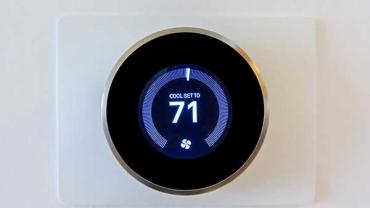
How often have you walked into a building and been irritated at the temperature which either left you with a cold-induced headache or heat-induced sweat? Or, have you ever found yourself in a work environment in which you and your coworkers get along great, except that you can’t agree upon the ideal temperature for the office? Maybe the battle for the thermostat takes place in your home. Nearly all of us have experienced uncomfortable indoor temperatures which have left us wondering how others can suffer through what we perceive as extreme cold or heat. According to researchers, the battle over the thermostat is not unfounded and is actually rooted in gender-specific temperature preferences. In a nutshell, women prefer higher temperatures and men prefer lower.
The average climate regulations for residential buildings and offices were developed in the 1960s and primarily based on the basal metabolic rate of the average adult male. Unfortunately, this estimation may be up to 35 percent greater than the average female basal metabolic rate. Women, therefore, are likely to feel uncomfortably cold in temperatures that seem well-regulated for men.
Effects on Cognitive Performance
According to a controlled study of 543 students, which sought to explore the effect of temperature on cognitive performance by gender, turning up the thermostat may help more individuals study and work more effectively. The study analyzed math, verbal, and cognitive reflective tasks in temperatures varying between 16.19 to 32.57°C (61.14 to 90.63°F). Results showed that females exhibited better performance in math and verbal tasks in warmer temperatures while males performed better in cooler temperatures. Neither gender showed differences in cognitive reflection tasks. Further, the improvement in the female’s math and verbal performance was more significant than the improvement in the male’s performance, suggesting that females are more sensitive to temperatures compared to males. Therefore, turning up the temperature may foster a more productive work environment; especially if the office has a substantial number of women.
Effects on Physical Performance
In a study published in Military Medicine, gender differences in thermoregulation were evaluated to determine the potential impact on physical performance. Women had a lower sweat output in response to heat stress and less shivering in response to cold stress, which indicated a greater difficulty regulating body temperature and a greater degree of sensitivity to temperature changes.
Physiological Differences in Thermoregulation
Past theories have led the majority to assume the gender differences in thermoregulation were due to physical characteristics such as women having less lean mass and muscle strength, lower body weight, higher body fat, and are typically shorter compared to men. These observations are certainly true and have an impact on thermoregulation; however, we now know that females also have a lesser ability to sweat due to possessing smaller sweat glands and a lower sweat output per gland. Therefore, men have a greater capacity to regulate body temperature through sweat heat loss. Similarly, women’s lower ability to shiver also suggests less power to generate heat. Finally, women tend to consistently have a lower skin temperature compared to men.
Further, the levels of various sex hormones affect thermoregulation and cause frequent fluctuations in a female’s core body temperature and response to external temperatures. A higher level of estrogen is associated with a lower body temperature since estrogen promotes vasodilation and heat dissipation. Progesterone has the opposite effect and is associated with higher body temperature.
Before using the research as evidence for cranking up the thermostat, just how much warmer do women prefer the temperature to be? Apparently not that much. According to one investigation, the mean comfortable temperature for women was 79. 3°F while men were comfortable at 77.5°F making the difference only a few degrees. Turning up the office or home thermostat just a couple of degrees may not only make for a more productive environment but has the added benefit of energy (and hence, cost) efficiency.